Running While Pregnant: 10 Training & Gear Tips to Feel Your Best
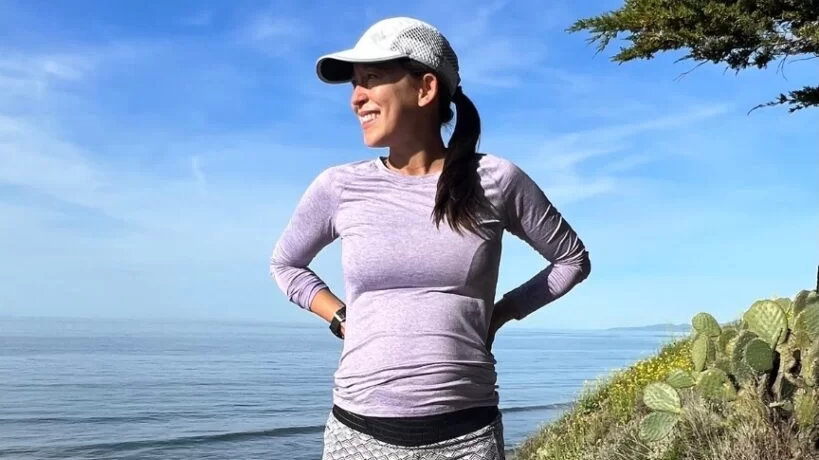
I’d like to preface this article with a note- I recognize that everybody and every body is different. Also, every pregnancy is different. I wrote this article because it’s important for women to share their personal experiences, if they’re willing. It gives others something to relate to and helps us all to recognize that we’re not alone in our struggles and successes. This article is written strictly for informational purposes and in no way constitutes professional medical advice. Still finished a 12-hour race in the second trimester! INTRODUCTION TO RUNNING WHILE PREGNANT As a runner with two decades of mileage under my feet (half of that running ultramarathons), I’ve become quite familiar with how my body feels and reacts during training, from hard efforts to recovery days. Last September, as I was running 80 mile weeks in preparation for an upcoming 100-miler, I noticed I felt “off” for an entire week leading up to a tune-up 50K. Of course, this was during the final legs of Covid, so I took two tests and got only one line on both. Negative. My next hypothesis was simply training fatigue. I was training pretty hard, though it wasn’t that out of the ordinary for me. Around that same time, it dawned on me that my period was a week late. The morning before I was scheduled to fly out to Arizona for my race, I took another type of test, the kind you wait in the bathroom to see the results. That one also had only one line– a faint pink one. Yep, I was pregnant. It was nice to know my training was on point. Once the initial joy and excitement of the moment subsided, I knew that I would need to shift gears and reassess my running goals at some point. This was also the first time that I googled “running during pregnancy.” My search produced mixed results that left me feeling confused and overwhelmed. To be fair, it’s not exactly the most common pastime, though it’s thankfully becoming more common thanks to the high-profile athletes like Alyson Felix. Second trimester trails I filed my own questions away for my first OBGYN appointment. I’ve known of many women who ran and raced through pregnancy and ended up with healthy babies, which was reassuring. However, this was now my baby and it was sudden and new to me. Regardless, I decided to race my upcoming 50K with just a slight sense of nausea and uncertainty. In the end, it all turned out pretty okay. Following that race and my first OB appointment, I came up with some new running goals: As mentioned earlier, I consider myself an experienced runner. However, pregnancy has been extremely humbling. If I’m being honest, it feels a lot like starting over again. Nevertheless, I’ve learned a lot of lessons over the past nine months, and I hope that sharing them will help you in some way. Testing out some Rabbit running gear FIRST TRIMESTER TRAINING TIP #1: COMFORT IS THE NAME OF THE GAME. As far as running goes, not much changed in the first trimester besides nausea, fatigue, and a slightly slower running pace. I mean, that’s basically a description of the later stages of an ultra, so the feeling wasn’t that unfamiliar to me. Just like those moments, I found it useful to stay as comfortable as possible when running and not running. Gear tip: My absolute favorite during first (and really all) trimesters was Rabbit’s EZ apparel, which is their ‘relax and recover’ line made of the softest ever fabrics. No, seriously, they are the softest. I practically lived in them throughout my pregnancy. I especially love the fit and selection of neutral and fun pastel colors and patterns that make the wardrobe very flattering and perfect to wear on any occasion. My personal favorites are the EZ tee (long sleeve and short sleeve), EZ joggers, and Leggy 4”. These were all staple wardrobe items early on and continued to feel comfortable as my belly grew. Shop The Gear Shop Rabbit EZ Tee$48 Shop Rabbit EZ Joggers$88 TRAINING TIP #2: DON’T STRESS OVER PACE AND MILEAGE. I was guilty of this in the early weeks, but eventually I learned to let go. Running became easier and a lot more fun once I did. I also learned that each day was different- some days I’d feel good enough to knock out big miles, but others I opted to skip the run. I took full advantage of the good days and rested on the not-so-good ones. I also kept most of my runs easy and stopped looking at pace. My body was growing a human– that requires a lot of work! TRAINING TIP #3: EAT SMALL MEALS AND/OR SNACKS OFTEN. If I started my morning run on an empty stomach, it was almost a guaranteed puke fest. I found that starting the day with a light meal helped combat some of the morning sickness. Snacks and light meals throughout the day helped balance it out as well. Some of my go-to nutrition to ward off the nausea: greek yogurt with granola, small bowl of cereal, crackers, fruit, and granola bars.
Ultimate Direction Cirriform Collection Review: Isn’t That a Cloud?
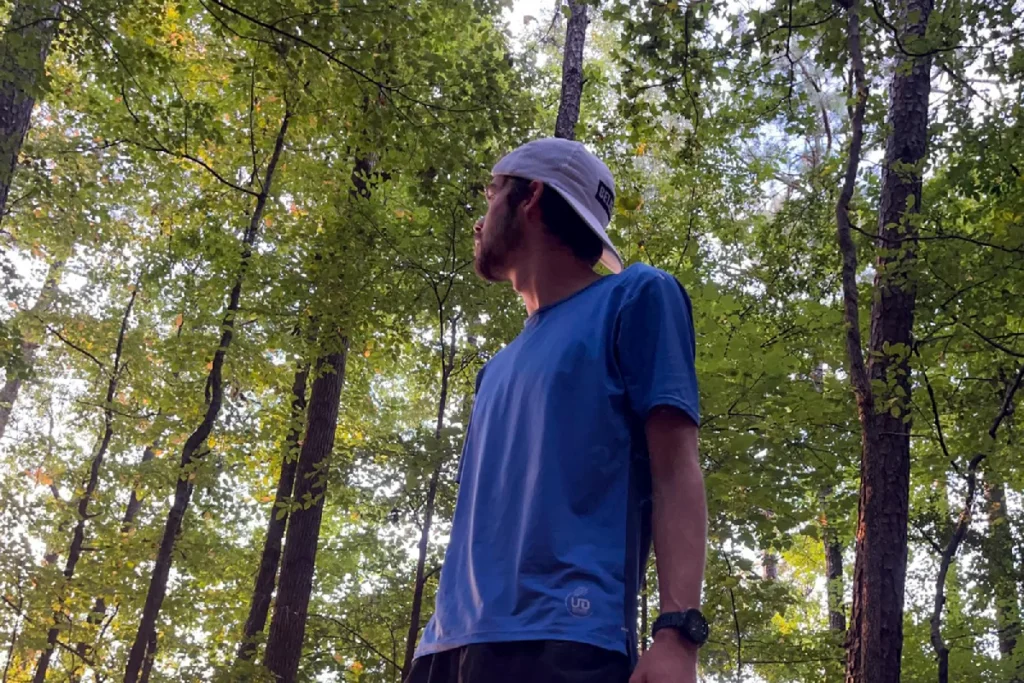
INTRODUCTION TO THE ULTIMATE DIRECTION CIRRIFORM COLLECTION MICHAEL: From a company better known for hydration on the trails, the Ultimate Direction Cirriform collection comes as the brand’s latest foray into the world of high-end, trail-focused apparel. Consisting of a short sleeve, a long sleeve (not reviewed here), and a singlet (called a vest for some reason?), the Cirriform collection is built for essentially one purpose: to keep your runs feeling light and cool. Let’s get into the details of what makes these tops perform better than your average dry-fit tee from TJ-Maxx, or in my case, old cotton t-shirts from college. MELISSA: Ultimate Direction has had my back when it comes to keeping me hydrated over the years, and now they’re here to keep me dry as well. The Cirriform collection is designed with an array of cool features to keep you comfortable during your runs. Let’s dig in. MEN’S ULTIMATE DIRECTION CIRRIFORM TEE AND VEST MICHAEL: As I mentioned before, the Cirriform collection is built to keep the body feeling cool and light, so my typical morning runs in 85 degrees and 90% humidity proved to be pretty great testing grounds for the t-shirt. The fabric is not thin per se, so it doesn’t feel like a crazy light racing singlet or papery-thin, but rather a higher-end polyester blend. Despite their thicker construction, these shirts are seriously breathable, aided in part by a perforated back of even more breathable mesh material. If you’re feeling like you want to pull a Walmsley in your daily running wear and poke holes in your shirts, no worries. The Cirriform collection has you covered in that department. Other details I appreciated in the shirts were the flat-locked seams and seamless shoulder construction that made running with a pack very comfortable. And while I didn’t get a chance to test the long sleeve (we don’t exactly have the conditions for that yet), I have no doubt this will be a pretty well-loved piece for me during those weeks of early fall. I love the looser fit in my size M, and it’s also worth mentioning that the material provides UPF 20 sun protection and is also anti-microbial. I was skeptical at first, but sure enough, I do think these shirts didn’t smell quite as bad as others I’ve tried after literally ringing out the sweat in them after morning runs in AL. Lastly, I would like to clear up some confusion about the vest name for the sleeveless shirt in the collection. This isn’t a vest or even a sleeveless tank; it’s really more like a singlet. So even if UD says this piece is vest-compatible, I personally wouldn’t attempt the sleeveless shirt/running vest combo. I’m just not cool like Billy Yang, and that’s okay. PRICE: Tee – $54, Vest – $54 WOMEN’S ULTIMATE DIRECTION CIRRIFORM TEE AND TANK MELISSA: First off, I love the colors. A lot of running clothes I see lately feature crazy colors and patterns. I’m all for simplicity — my street clothes are mostly solid-colored tees and jeans — but of course, that’s just my preference. The fit is true to size, too. I’m 5-foot-2, 115 lbs, and the XS fits very nicely. In particular, the tee has a very flattering and comfortable fit. It’s form-fitting, yet loose where I’d like it to be. The material and cut make the likelihood of bunching and pilling minimal when worn with a hydration vest. Overall, it’s solidly constructed, and I have no doubt that these pieces can endure many, many miles. The material breathes well and dries quickly — perfect for those long summer runs. I also appreciate the mesh design over those key sweaty areas. Some other neat features include SILVADUR, an antimicrobial polymer technology designed to prevent the growth of bacteria that contribute to odor and staining, and UV protection. However, I’m a bit confused about the extent of UV protection, as the tags claim UPF 50+ while the UD website claims UPF 20+. Either way, it’s better than goin’ bare. PRICE: Tee – $54, Tank – $49
7 Insider Tips to Running The Boston Marathon (And Getting To The Start Line)

WHAT YOU NEED TO KNOW The Boston Marathon is the most iconic of running races– over 125 years of blood, sweat, and tears, with so many legendary duels and battles it’s hard to rank them all. For many/most runners, qualifying for the Boston Marathon is the pinnacle of their running goals. Often attainable, but often requiring years of work and incremental successes mixed with monumental failures, the race holds an almost mythical quality in the running world. When runners do finally qualify (or race with a charity bib), the process of getting to Boston and to the start line becomes another marathon filled with logistics, long waits, bus drives, and more. Nobody wants to worry about those things in the lead-up to the biggest race of their life, so we decided to put together a guide that will help you get from point A to point Boylston as stress-free as possible. Running the BAA 5K on Saturday INTRO MEAGHAN: The first time I ran the Boston Marathon was back in 2015. I was only a few years into running and couldn’t comprehend the magnitude of a major marathon. To the point that I took an Uber straight from the airport to the race expo the Sunday before the race. If you’ve ever been to the Boston Marathon expo, you know that having multiple pieces of luggage is one of the worst decisions you could ever make. All this to say, over the course of three trips to Boston, I’ve learned the hard way how to navigate the weekend, but eventually came away with some big wins (like a 2:48 course PR). Hopefully these tips can help you prevent the same mistakes I did so you can have the most success on race day and feel good throughout that long journey that ends with a right on Hereford, left on Boylston. We wanted a couple perspectives for this guide, so we also brought on Ben Johnson, Instagram personality and runner who’s run Boston twice (2021 & 2022), as well as Meghann Featherstun, registered sports dietician of Featherstone Nutrition and co-host of the Fuel For The Sole podcast, who’s run Boston four times. Lastly, if you’re heading up to Boston, we hope to see you there– make sure you say hello! Pre-race shakeout run in 2022 WHERE TO STAY MEAGHAN: If you’re reading this within a month of Boston, you’re probably screwed, and best of luck to you at whatever backwoods campground or overpriced hotel you’ll be staying at. The best place to stay is downtown Boston, near the finish line. Unless you have incredible parents who meet you in Boston, drive you down to Hopkinton on Sunday, and then drive up to the finish while you’re running Monday morning… yes, that was amazing. But, staying downtown is the next best thing. There are a bunch of hotel options, but you really need to book early (like mid-July of the previous years) through Marathon Tours for the best deals. We typically stay at The Westin Copley Place. If you’re looking for a quieter place to stay, Cambridge is an option, which is located across the Charles River from Boston. This area is home to Harvard University and MIT, and has some nice restaurants and shops. Newton is another option, located just outside of Boston. That’s where the famous Heartbreak Hill is located. BEN: If you’re okay being even farther out of Boston, I’ve had luck staying in Waltham. It’s a small town along the course and avoids much of the hectic feel during the stay, but it will require driving into town to get your bib, and coordinating your own transport to the bus pickup for the start (more on this later). This is a good option if you’re traveling with enthusiastic spectators that want to view the race from more than just the finish. If they have a car, being outside of town allows for stopping at a couple points along the course prior to heading down to the finish area to meet up. PACKING & TRAVEL MEAGHAN: It doesn’t matter if I’m packing for a long weekend or two weeks, there’s no way I can fit everything in a carry-on. With that said: ALWAYS CARRY ON YOUR RACE GEAR. We’ve heard plenty of lost-luggage horror stories where someone’s race kit ends up lost in the bowels of Southwest somewhere in middle America, necessitating an emergency run to Heartbreak Running Company. Nobody wants that stress on race weekend. For that reason, my race day shoes and kit can always be found with me. In addition to my kit, I basically carry on anything I can’t replace and need for race day – like my favorite handheld. I also carry-on on Skratch Hyper-hydration for the night before and regular Skratch for race day. You can get the nice individual packets, or just store some in a plastic bag and look real sketchy. Both get through security just fine. BEN: As Meg said, I always travel to races with a carry on and avoid the chance of a lost checked bag. Call me paranoid, but I also keep a smaller bag inside my rolling carry on. For more room and extra flair, I use the Nike Shoe Box bag which holds my race shoes and full race kit (shorts, singlet, socks, etc). If you just need to carry shoes, use a dry bag like the Ortlieb PS10. Both will keep odor locked in so it doesn’t smell up the rest of your luggage. It’s good to have both of these in case the overhead bins fill up and I am forced to check my bag at the gate; the smaller bag could be pulled out and put under the seat in front of me. For my other items I make sure to pack all of my fueling and nutrition so that there is nothing new on race day (Maurten has never had an issue making it through TSA, but my extra large bag of Sour Patch Kids was checked before). Bring layers, have rain gear, sunglasses
SunGod Ultras Sunglasses Review: If Santa Cruz Could See Me Now
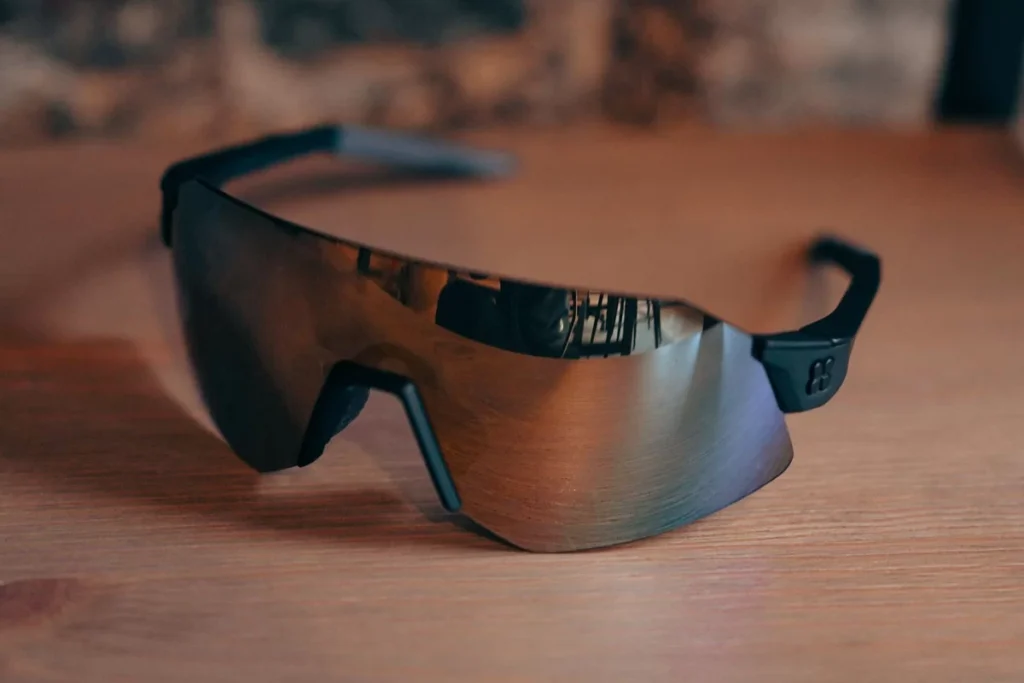
THOMAS: It wasn’t all that long ago that shield sunglasses were a distant memory of the 80s and 90s, like the Walkman or the electric typewriter. Heck, I can still smell the coconut suntan oil that drenched the Santa Cruz surf shop where I first saw a pair of Oakley Blades. Those screens with multicolored reflective coatings seemed to magically float on your face, transforming ordinary dweebs like me into rad brahs with whom Jeff Spicoli would be stoked to share a righteous pie. The rub was that they’d set you back a hundred clams — at least. A Benjamin was a shit ton of money back in the day, but I had to have my Blades. Looking back, I get why they kept ’em in a locked case. I would have gone for a five-finger discount if they’d been any more accessible. Instead, I had to squirrel away money like I was investing in a 401K. As I saved, I imagined how cool I would look when I finally had them. Before long, that day came, and my biggest decision was which color to buy. I went to the surf shop and weighed my options, eventually landing on orange frames with a gold-to-red gradient shield. You might think — or at least I did — “Damn, the kid made it. Next stop, Coolsville, USA.” In reality, eyewear alone isn’t enough to transform a pale, scrawny, half-Jewish kid with braces. Honestly, the Blades just amplified my dorkiness, so I left the shields to pro wrestlers and burnt-out surfers. It would be almost 25 years before I would work up the nerve to wear another pair. Truth be told, I still can’t don them without a bit of self-consciousness, but as a runner, I can walk around in 3-inch shorts or tights, so who gives a shit what people think of my shades? Besides, the 80s are back in style. Looks aside, shield sunglasses offer a couple of practical benefits. First, blade-style lenses are lightweight and provide wrap-around coverage. Second, sunglasses are essential for protecting your vision, duh. As for the SunGod Ultras, need I say more than that you can customize each pair? You can make the Ultras fit your unique personality with ten frame color choices, ten different lenses, nine logo color options, and eight earsocks colors. Earsocks, for the uninitiated, are the rubber tips that cover the frame near your ear. I went through the process and created two pairs of Ultra sunglasses, which were delivered within a week. The SunGod Ultras are right in line with what you’d expect from the $185 price tag. The lens clarity is crystal clear, and there wasn’t any fogging. Once the glasses were in place, I didn’t have any bouncing. The Ultra can handle the double duty of running and cycling and are a perfect choice for triathletes. If I could write a letter to my past self, I’d tell him to save his clams on that pair of Oakley Blades. He didn’t know just how cool shields would become in the future. As Marty McFly told a confused gym in Back To The Future, “I guess you guys aren’t ready for that, yet. But your kids are gonna love it.” I’d also show him this picture…
Achilles Tendinitis and the Little-Known Treatment That Fixed It For Me
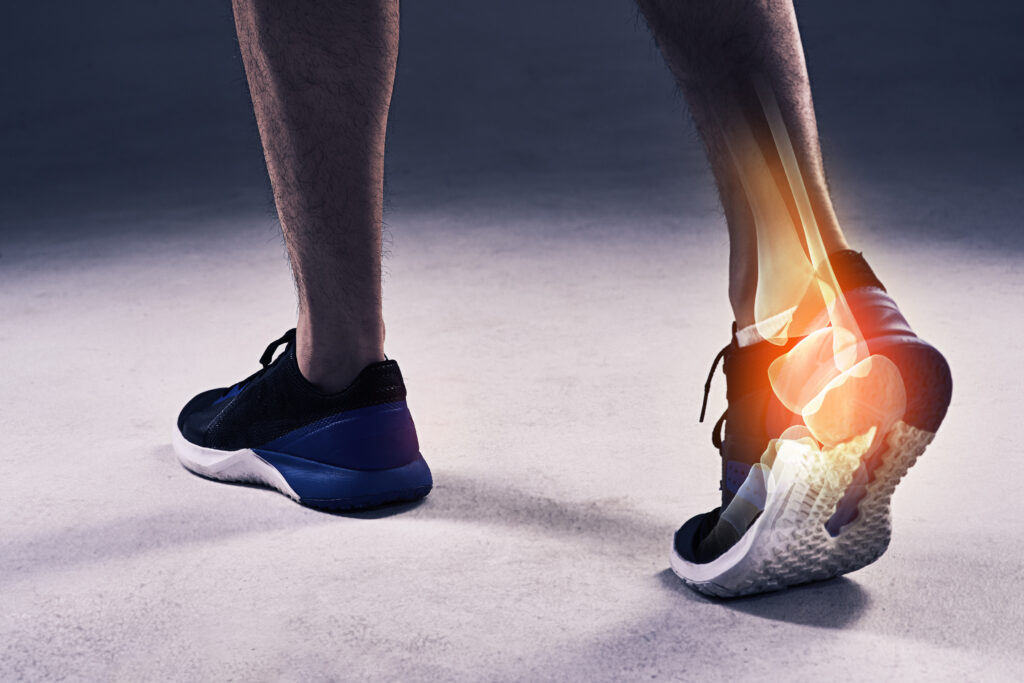
The information provided in or through this website is for educational and informational purposes only and solely as a self-help tool for your own use. Please consult your doctor or physician before beginning any treatment. MY BACKGROUND WITH ACHILLES TENDINITIS It had been nearly 5 years since I found myself with any sort of injury. Sure, I had the occasional annoying pains here and there, but such is the life of a long-distance runner. Nevertheless, it was nothing that prevented me from lacing up every morning. That was until December 2022, when I found myself with a bout of Achilles tendinitis, a nightmare injury for runners. Persistent and limiting, it’s an injury that falls into the same bucket as other deadly curses like plantar fasciitis, IT band syndrome, and high hamstring tendinitis. As with most running injuries, it was your typical overuse case. I raced a half marathon and tried to squeeze in a workout two days later before leaving for a trip to Austin. Soon after, the pain and discomfort in my Achilles started, and– like most delusional runners– I decided to keep running on it. Eventually, the pain and discomfort were enough that I had to take several days off. I rarely take consecutive days off, so I can assure you the pain was real. I started back up using the Lever, an adjustable harness device that essentially turns your home treadmill into one of those anti-gravity treadmills you find at a physical therapist’s office. I posted a photo to Instagram expressing my gratitude for the machine. Almost immediately, people were messaging me with suggestions on how to treat Achilles tendinitis. One of those messages was from Ben Johnson; it was an article he had bookmarked after going through a similar injury and coming through the other side. In short, the article recommended a ridiculous concoction of gels and creams rubbed into the Achilles, then wrapped securely with cling wrap (e.g. Saran® Wrap). Oh, and this is done right before you go to bed, so you you’re basically sleeping with a mummified leg. Like any desperate, injured runner in the middle of marathon training, this plan sounded perfect. So I immediately tracked down the ingredients and wrapped my leg overnight. Me typing that sentence out still sounds just as crazy as the first time I tried it. How did it turn out? I’ll get to that in a second (okay, it worked), but before we go forward, let’s get a general idea about Achilles tendinitis and its symptoms to see if you might fall into the same injury camp as myself. WHAT IS ACHILLES TENDINITIS? Achilles tendinitis is a condition that causes pain, swelling, and stiffness in the Achilles tendon, which is the large tendon that connects your heel bone to your calf muscles. With most runners, it’s usually caused by overuse of the tendon, and is often a result of repetition over time. WHAT ARE THE SYMPTOMS OF ACHILLES TENDINITIS? Before we get into it, it’s important to note that the below symptoms can vary in severity and may worsen over time if left untreated. If you experience any of these symptoms, it’s important to seek medical attention to determine the best course of treatment. WHAT ARE THE BASIC TREATMENTS FOR ACHILLES TENDINITIS? Stay tuned until the end for my magic concoction. But it’s important, especially in the early acute phase, to use my method in conjunction with the below recommendations to ensure a quicker recovery. NOW, FOR MY SECRET TREATMENT We already mentioned this at the top, but let me say that this is in no way medical advice and you should consult your doctor before attempting, as one of these ingredients is a prescription-strength medication. Anyway, after Ben sent me his advice, I went to bed that first night with a witches’ brew of gel, cream, and plastic wrap around my leg (stay to the end for the full recipe). I had my doubts, but I was willing to give anything a shot with a goal marathon around the corner. And wouldn’t you know it, I woke up the next morning and my Achilles was feeling better than it had in weeks. Weeks! It wasn’t fully healed, but it was a lot better. I kept this nightly wrap routine going for about a month leading up to the Houston Marathon, and come race day, I had almost no discomfort. After the marathon, in addition to the nightly wrap, I started an exercise routine of leg and heel raises which I did about three times a day. This seemed to be the winning combination; one day I just woke up with zero pain of any kind. It was like Christmas morning and I haven’t had any issues since, running an average of 70 mile weeks. THE SCIENCE BEHIND IT I reached out to Dr. Leo C. Kormanik II, a Certified Chiropractic Sports Practitioner (CCSP) to find out if I was completely delusional, or if this elixir had some legitimacy. “Voltaren is used as a topical anti-inflammatory. I like to use it in cases of tendinitis since it is topical and doesn’t run through the liver or kidneys at the same rate as oral anti-inflammatories,” Kormanik noted. “For an area like the Achilles (some of the poorest blood flow tissue in the body) the Arnica really helps to pull blood to the area since it has been shown to increase circulation.” I’m sure you’re wondering if the cling wrap was just a ludicrous addition or an actual benefit, so I asked about that as well. “Good lipophilic (fat loving) lotions have been shown to hang around the applied area longer. Voltaren and a good arnica solution will be lipophilic and thus will not rub in easily since it will cross the skin membrane slower. The Saran wrap keeps the lotion on the skin so socks and pants do not rub it off. Secondarily, the Saran wrap quickly heats up the area since it cannot breath normally. The increased blood flow as a reaction is
Shokz OpenRun Review: Open Ears, Full Hearts, Can’t Lose
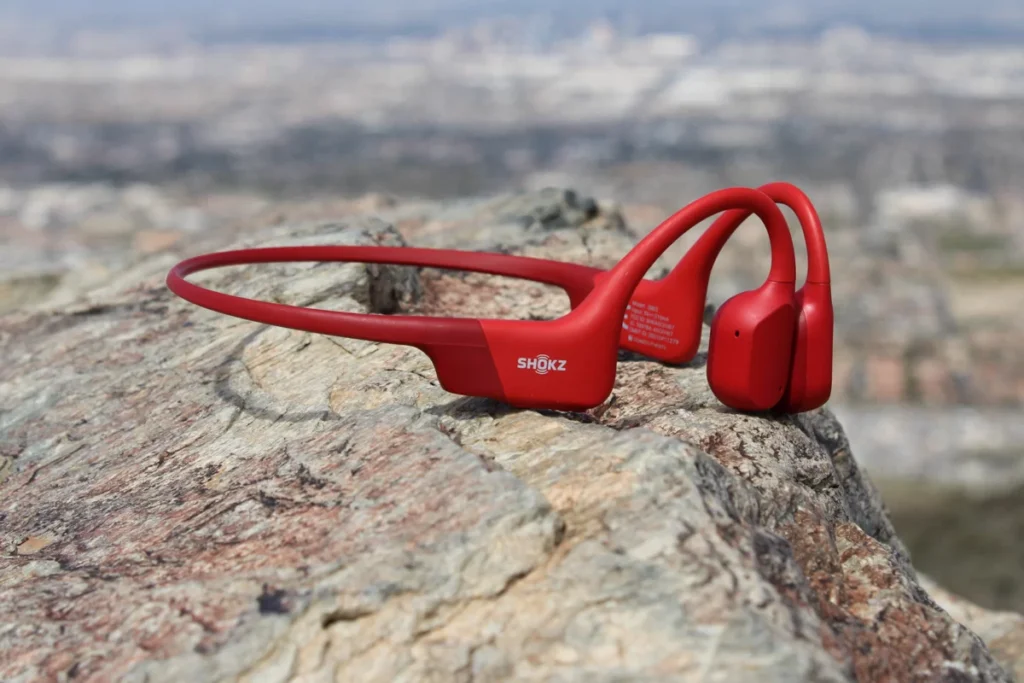
SETH: We live in a fast-paced world full of moving vehicles, terrible drivers, and other distractions — so audio devices like earbuds and headphones block your ability to hear, which can prove quite risky and dangerous. Is bumping that new Drake album really worth the risk of being trampled by an 18-wheeler? Probably not. But I, and many others, risk it every day. Thankfully, there may just be a solution to avoid or minimize risk allowing you to jam out and still hear everything around you. These are the Shokz OpenRun bone conduction headphones. WAIT, WHAT’S BONE CONDUCTION? Bone conduction is when sound travels through the bones in your skull to reach your inner ear, allowing you to hear crisp, clear audio without blocking your ear canal. OH, COOL, BUT ARE THE SHOKZ OPENRUN WORTH THE $129 ASKING PRICE? The fact that I can jam out and remain aware of my surroundings is awesome, but is this a quality product worth more than a Benjamin to pick up? Well, that decision will be up to you. I can, of course, offer a little guidance along the way, so let’s dig into everything you ever wanted to know about the Shokz OpenRun headphones. THE GOOD SETH: Let’s say your Shokz OpenRun are dead because you haven’t charged them in a week and your buddy invites you to go workout. He says he’ll be at your house in 20 minutes, what do you do? Well, don’t worry because 15 minutes on the charger is enough to juice your OpenRun headphones for a full 60-minute workout. If you have a fast-paced lifestyle, or you’re just too lazy to charge your headphones before bed (that’s me), you’ll love the quick charging. The Shokz OpenRun also fit pretty much perfectly. I’ve had trouble in the past with earbuds that didn’t quite fit my ear canal or just weren’t secure enough over the course of a run. The over-ear design of the OpenRun pretty much knocks that worry out of the question. You just loop each earbud — for lack of a better term — over your ear, and the slight curve of the band holds them tight to your head. One area that traditional earbuds tend to shine, however, is by getting your tunes directly into your ears. They block out the outside world, letting you just enjoy whatever it is that helps to pass your run. I honestly questioned how the open-ear design would affect the sound quality of the Shokz but found myself pleasantly surprised. Tones come through crisp and clear, especially when listening to the human voice. You can also tap into the super convenient audio control features (skip, pause, pairing, and volume) and the fact that the Shokz OpenRun headphones are waterproof. I’ve never had any worries about running in the pouring rain. THE BAD SETH: The Shokz OpenRun headphones are pretty cool, but there are a few things you should probably consider before you smash the Add to Cart button. For starters, the microphone. It’s fine in quiet areas like an apartment, but once you get into a noisy gym or step into a breezy afternoon, the quality goes out the window. Sounds come out distorted like you’re on a call in the middle of a tornado… and we’re not in Kansas anymore. I also have some concerns with the volume output from the Shokz OpenRun. Yes, sound quality is great, but I find that I can’t make it louder than the ambient noise of running by a major highway or an active construction site. Even if I max the volume out, I still hear jackhammers instead of Jack White. My headphones are my savior on brutal long runs, and I just can’t handle the outside sounds. Despite the Shokz offering fast charging for a quick pick-me-up, the battery life could be a bit better. Eight hours is more than enough for a workout or a run, but you might want more if you’re powering through an ultramarathon or you have a long shift at work. Additionally, you have to remember to shut off your headphones in order to preserve that idle charge — not something that AirPods have to contend with. One final issue — the Shokz OpenRun charger. It’s a proprietary design, which means you’ll have to order a new one if you lose it rather than using a charger from an iPhone or Android. SHOKZ OPENRUN CONCLUSION SETH: I’ve really enjoyed the Shokz OpenRun in my day-to-day life. The headphones are quick, easy, and convenient. I place them around my neck when heading out the door, whether I know I’ll need them or not. That said, if you’re looking for a premium pair of headphones to immerse yourself in the audio dimension or take phone calls all the time, the OpenRun probably isn’t for you. I’d still recommend a pair for travel days and whatever other times you need to be mostly aware but still want to listen to your favorite playlist. Whether you’re in an Uber, walking through an airport, or waiting on a pizza in the oven while cleaning your house, there’s always something you need to hear. The Shokz OpenRun offers decent battery life, good sound quality, and premium durability to go along with a sense of safety while out and about. If you’re one who loves listening to music, podcasts, or audiobooks while needing to hear the world around you, the OpenRun is right up your alley. You can pick up the Shokz OpenRun for $129 at Running Warehouse (featuring free two-day shipping and 90-day returns).
Performance Tea Review: A New Nutrition Brew
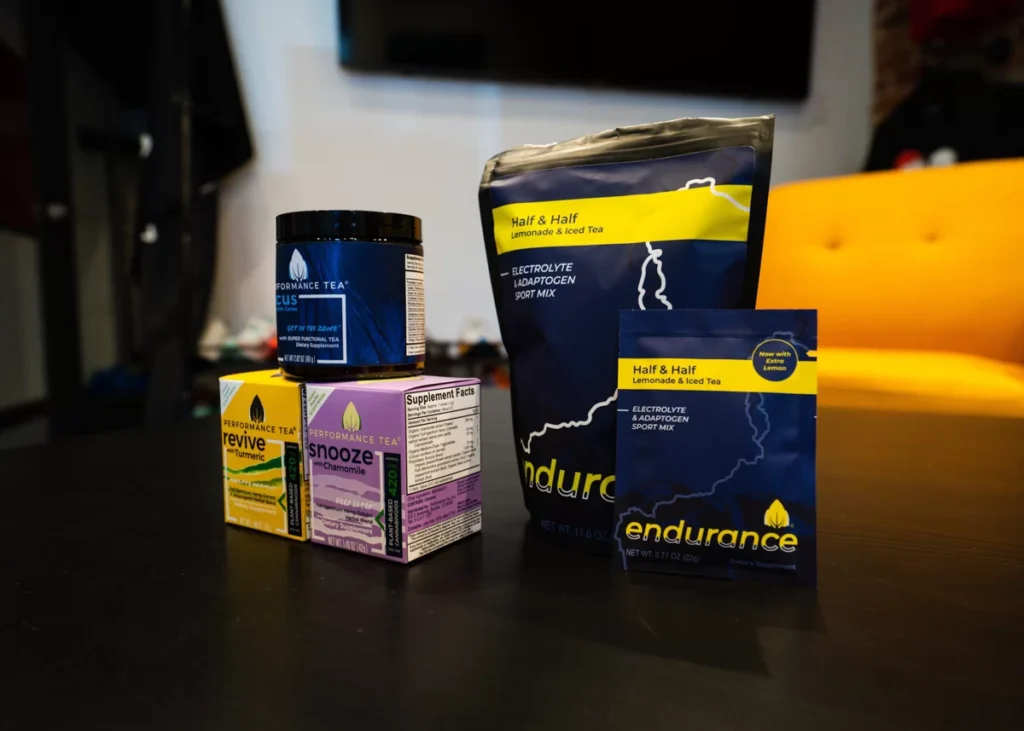
WHAT YOU NEED TO KNOW BRANDON: Have you ever heard of Performance Tea? Probably not. It’s certainly not a knock on Performance Tea, though. They’re a small performance nutrition brand based out of Colorado with only one focus in mind: to curate and craft impressive plant-based products for both wellness and performance. To me, the versatility and variety of their products are what make Performance Tea so unique. I recently had the opportunity to test out some of their more popular products. They sent over four teas: Revive, for a morning kick; Endurance, for workouts and runs; Focus, for when I’m at work; and Snooze, for recovery and relaxation before bed. All of Performance Tea’s mixes come in the form of a powder with a small plastic spoon, which makes life easy. You don’t have to be an herbal mixologist to get the proper ratio here. The packaging is smart and modern in design and provides all of the nutritional facts and directions on best enjoying the tea. Like I mentioned earlier, all of these products are plant-based, so this stuff is perfect for all of you cool hip vegans out there. There are two branches to their products: Adaptogen Tea and CBD Tea. Adaptogens are a little hippie-sounding, but basically, they’re specific herbs and roots used to alleviate stress, insomnia, anxiety, and depression and help bolster the body’s immune system. CBD Tea, on the other hand, is found in the other products I tested, including Snooze and Revive. Before I bore you too much about all of the mumbo-jumbo rhetoric, just know that the CBD Snooze knocked me the f*ck out (in a good way). One last thing, I promise. Outside of the Endurance tea mix, I recommend mixing all of these products with hot water, not cold. You can do either, but it tastes much better as a hot tea. REVIVE BRANDON: You’re starting your day, and maybe you’re not a morning person. You reach for your morning coffee or tea, and this is where Revive comes into play. Revive is meant to give you a real kick in the pants to start your morning. It’s blended with turmeric and made for the use of mobility and movement. Revive falls under the CBD branch and includes 420mg or plant-based cannabinoids. 420 — get it? At least I crack myself up. Anyway, this stuff provides smooth energy and contains no sugars. When I tested the product, I found the turmeric to be pretty spicy. From a flavor perspective, I really felt that kick. I’d recommend this product if you’re looking for another way to start your morning without caffeine. PRICE: $49.95 ENDURANCE BRANDON: All right, you’ve had your morning tea, now off for your morning run. Not without some Endurance tea, though. This half and half lemonade and iced tea flavored sports mix is perfect for any part of the workout. Endurance falls under Performance Tea’s adaptogen branch. Endurance is an electrolyte and adaptogen sports mix for performance. Not only does it provide you with extra calories and electrolytes to keep your systems running, but it also offers all of the essential nutrients and components you need for a great workout or race. Not only does it taste great, but it’s easy to use. Add one or two scoops to a 24 oz bottle of water, shake, and you are good to go. It’s a simple formula. Adaptogens, calories, and electrolytes combine to make a perfect drink mix for any occasion. I enjoyed testing this stuff out. No, seriously. As I write this now, I’m sipping on some Endurance. I had some before a few of my runs and even a time trial and felt great the whole time. PRICE: $19.95 FOCUS BRANDON: Focus might have been my least favorite of the bunch, but that may have more to do with my inability to focus and stay in one place in general than it has to do with the actual product. I also had Focus while at work and mixed it with cold water, but all I could taste were cacao nibs. I tried it again and mixed it with hot water with much better results. Focus is an adaptogen product and is supposed to help you, well, focus. I tested this product at work a few times and found myself not feeling very different. The whole point of the product is to “get in the zone.” Focus not only provides you with the nutrients you need in the middle of your day, but it also works for the beginning too. Focus is another product you can have next to your morning brew and helps provide “mental clarity” to your day. Performance Tea recommends mixing this product with milk and honey, and I agree. I enjoyed the taste of Focus much more when adding the extra supplements. This one is vegan and gluten-free. PRICE: $39.95 SNOOZE BRANDON: So, I don’t know which one I like more — Snooze or Endurance. This is easily one of my favorite products of the bunch. Like I mentioned earlier, Snooze knocked me out! If you’re someone who takes melatonin and sleeping aids daily or struggles with insomnia, or just needs to chill out now and then, then this is a drink to consider. The supporting supplement in Snooze is chamomile, which is known to help with muscle relaxation and sleep. I’m not sure I even have to say this, but Snooze falls into the CBD category of products from Performance Tea and offers 420mg of plant-based cannabinoids. No, you can not get high off of this stuff — even if some of us at the office hoped otherwise. I recommend adding some milk and honey for flavor, and it’s best served hot. PRICE: $49.95 PERFORMANCE TEA CONCLUSION BRANDON: Many of these teas range around the $50 to $60 range, making it maybe a little steep (tea pun, get it?). However, each purchase should last you over a month, and the materials aren’t cheap. Most plant-based products are generally more expensive, anyway. If
Recipes from Meghann Featherstun: Hot-Hands Pockets
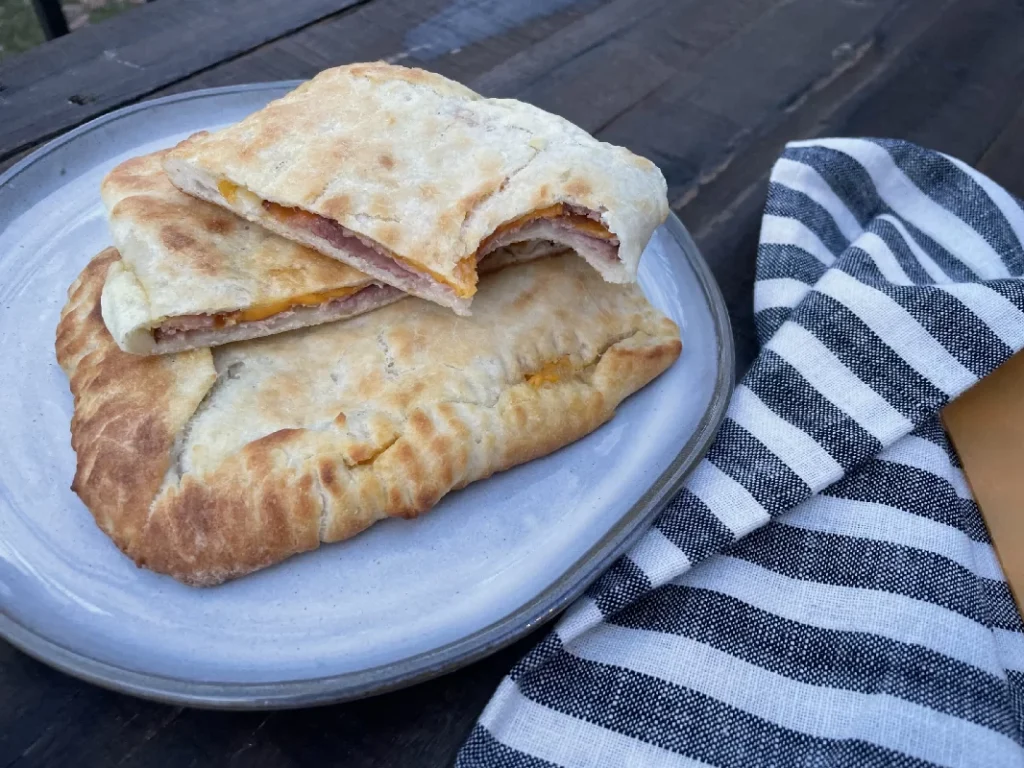
HOT-HANDS POCKETS Don’t let the cold get you down. Whip up a fine throwback favorite, homemade hot pockets. Stuff them with your favorite sandwich filling and keep a smile on your face on these cold days. Don’t let the ‘homemade dough’ hold you back – you’ve got this! All the carbs and protein you need to recover from these winter runs. INGREDIENTS DIRECTIONS Nutrition Facts: 1 pocket (½ recipe) 440 calories, 34 gm protein, 60 gm carbohydrates, 7 gm fat ABOUT MEGHANN Meghann Featherstun is a sports dietitian who works with runners all over the country to help them fuel their bodies for the best performance in life, running, and beyond. Check out more recipes, blog posts, group nutrition programs, and 1-on-1 nutrition coaching from Meghann at featherstonenutrition.com or on Instagram.
Recipes from Meghann Featherstun: Pre-Run Tarts
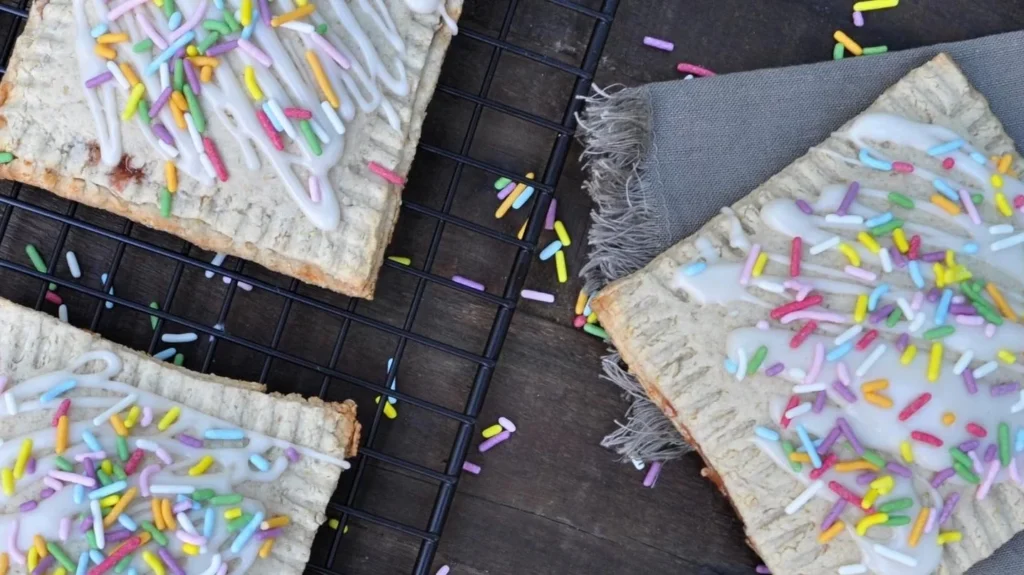
PRE-RUN TARTS If you haven’t tried making your own PR Tarts, now is absolutely the time. Promise, promise it’s not as hard as it looks. And, they make the perfect pre-run snack – plenty of carbs with just the right amount of fat & protein to eat before you run out the door. Get creative and use whatever you like in the filling, but we prefer to stick with the throwback original flavors of strawberry or brown sugar cinnamon. INGREDIENTS DIRECTIONS Nutrition Facts: 1 tart (8 total) 220 calories, 6 gm fat, 38 gm carbs, 3 gm protein ABOUT MEGHANN Meghann Featherstun is a sports dietitian who works with runners all over the country to help them fuel their bodies for the best performance in life, running, and beyond. Check out more recipes, blog posts, group nutrition programs, and 1-on-1 nutrition coaching from Meghann at featherstonenutrition.com or on Instagram.
Janji and La Sportiva Team Up for Vibrant Fall ’23 Capsule
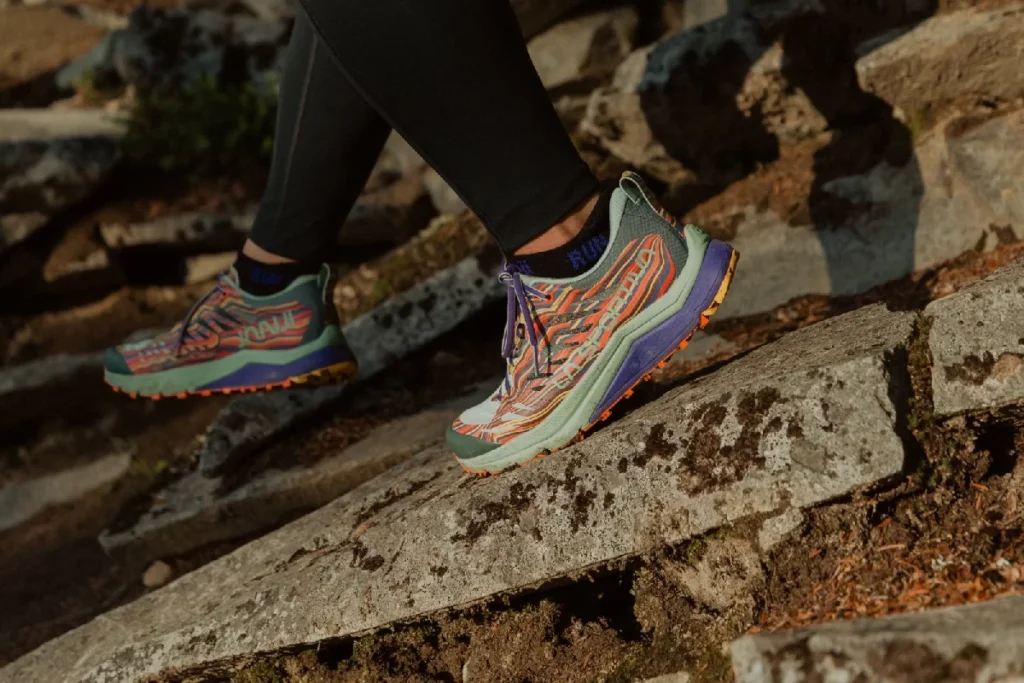
DOORS OF DESTINY We’re heading towards the final quarter of 2023 and the trailcore trend is showing no signs of dying down. Case in point– the all-new La Sportiva & Janji collaboration featuring not one, not two, but 10 pieces to satisfy all your technical trail and technicolor dreamcoat cravings. Available now at REI.com and coming to janji.com on October 3, the “Door to World” capsule includes trail running footwear in an all-new colorway of the La Sportiva Jackal II, as well as a full Janji running kit with “vibrant designs for everyday wearability.” Lace it up (photos courtesy of Janji) The designs certainly stand out, as evidenced in the colorful Tectonic Shift prints within the collection. Part earthen plates, part Everlasting Gobstoppper, the multi-colored palettes are sure to pop when worn out and about, whether on a mountain trail or a city sidewalk. While the entire collection has yet to be announced, we do know that it will feature a custom version of the aforementioned La Sportiva Jackal II as well as Janji’s new Zephyrunner Windshell, a vaporlight, packable windbreaker. The brand’s lightest fabric yet, it’s constructed of 20D nylon micro ripstop fabric, weighing 40gsm. Other pieces in the collection include the Pace Sports Bra, AFO Short, and the always-awesome Slingbag. We love the Janji Slingbag (photos courtesy of Janji) Unsurprisingly, there’s also a focus on sustainability as the entire capsule will include the use of recycled materials. The Jackal will see an update with recycled mesh materials in the forefoot, tongue, and lining, while Janji’s entire kit is constructed from a majority of recycled materials. Mountains are cool (photos courtesy of Janji) This marks the first collaboration between the brands; in fact, it’s actually La Sportiva’s first-ever collaboration in its nearly 100 year existence. The Italian brand is known for its quality and exceptional craftsmanship in mountain footwear and apparel. We’ve reviewed the Jackal II in the past and our reviewers had high praise for its performance on the trails. Similarly, Janji has slowly but surely built its brand, one loyal customer at a time, focusing on giving back to clean water initiatives while creating functional running apparel with bold designs. La Sportiva Jackal II As with all Janji collections, 2% of all apparel sales will go to clean water projects. The full collection is available now at REI.com and on October 3 at janji.com. La Sportiva Jackal IIUnisex
